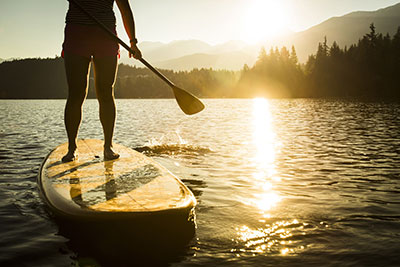Know How to Get Into Paddle Boarding as a Beginner
Paddle boarding is a quickly growing sport that gives people a new way to explore lakes, oceans, and other bodies of water. This guide explores different types of beginner paddle boards and provides information on how to stand and paddle.
Buying Your First Paddle Board
There are three main types of paddle boards recommended for beginners:
Allround Board
Most beginners do well with an allround board, which a multi-purpose board that is of average length, wide, and round at both ends. They are generally easier to stabilize and offer decent performance on both flat water and ocean water.
Surf Board

If you intend to spend all your time paddling on the ocean, a surf paddle-board is shorter than an allround with a pointed front end and flat back. They are also narrower, making them easier to use on wavy waters.
Flatwater Board
Paddle boarding on the open ocean or flatwater, a longer board with a pointed nose is optimal. Flatwater boards are wide enough to be beginner-friendly.
Standing Up
To get up onto your paddle board, first, walk your board out into water that is knee-deep and place your paddle onto the front of the board. Center yourself on the board, holding both edges to keep balanced. Move to a crouching position, with both feet planted onto the board. Keep your knees bent as you straighten your torso then lift your legs up into a standing position.
Using a Paddle
When paddle boarding, the scooped edges should face away from you regardless of which way you are stroking. The hand opposite the side you are stroking on should be holding the T-grip on the top of the paddle with the other hand positioned several feet below. There are two main strokes you should master to effectively navigate:
- Forward Stroke: Any time you want to move straight in front of you, aim for about two feet from where you are standing in the water and push the blade of the paddle completely into the water. Move the paddle back until it reaches your feet, and then pull it out. Switch sides frequently to keep yourself moving in a straight line.
- Reverse Stroke: To stop, slow down, or change directions, submerge the blade about two feet behind you and sweep it up towards you. To turn, do this motion on the side of whichever direction you wish to go.
With this information, you're ready to grab your new paddle board and life vest and get out on the water. Remember to be patient with yourself and have fun as you learn this new skill.